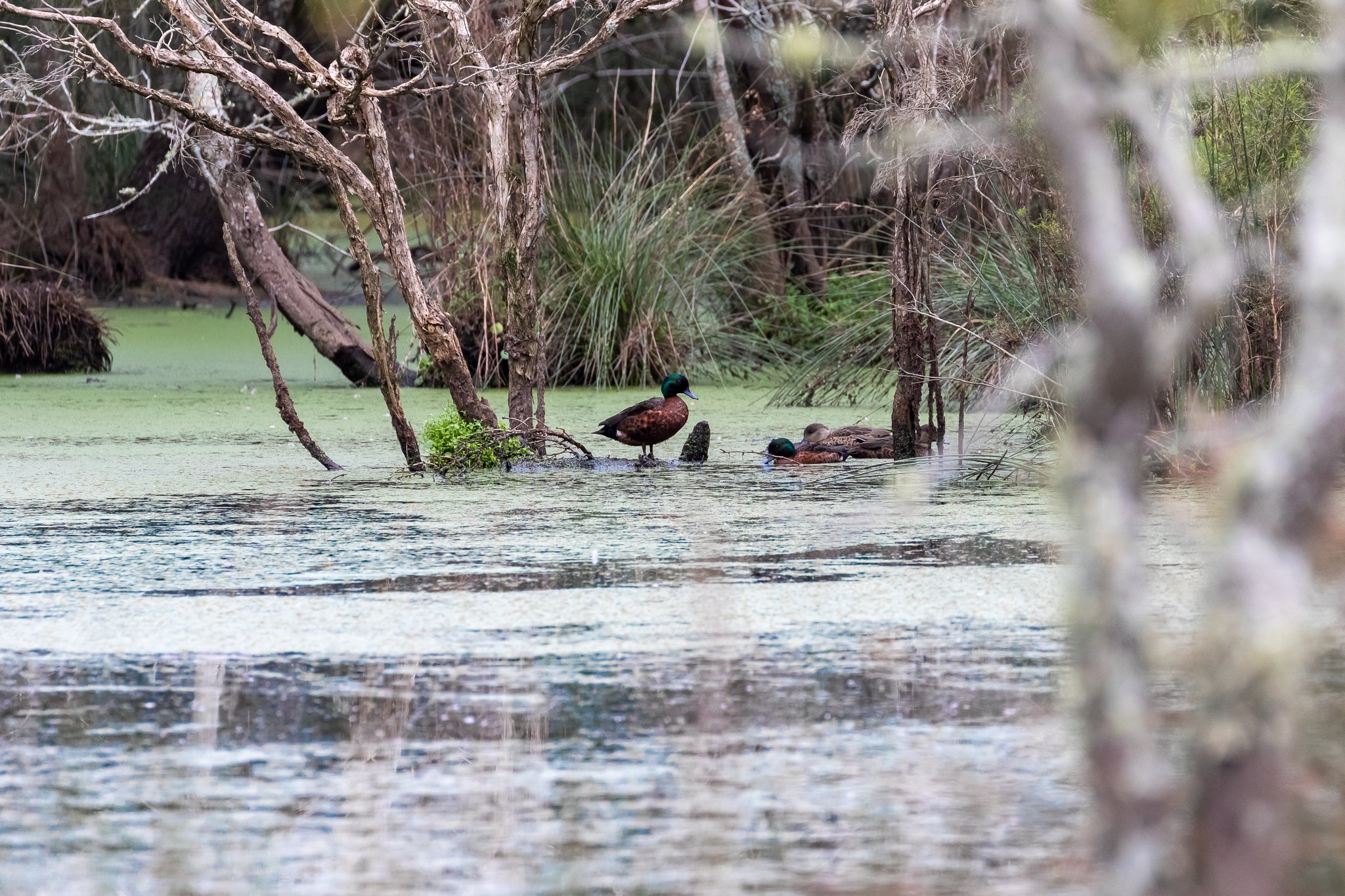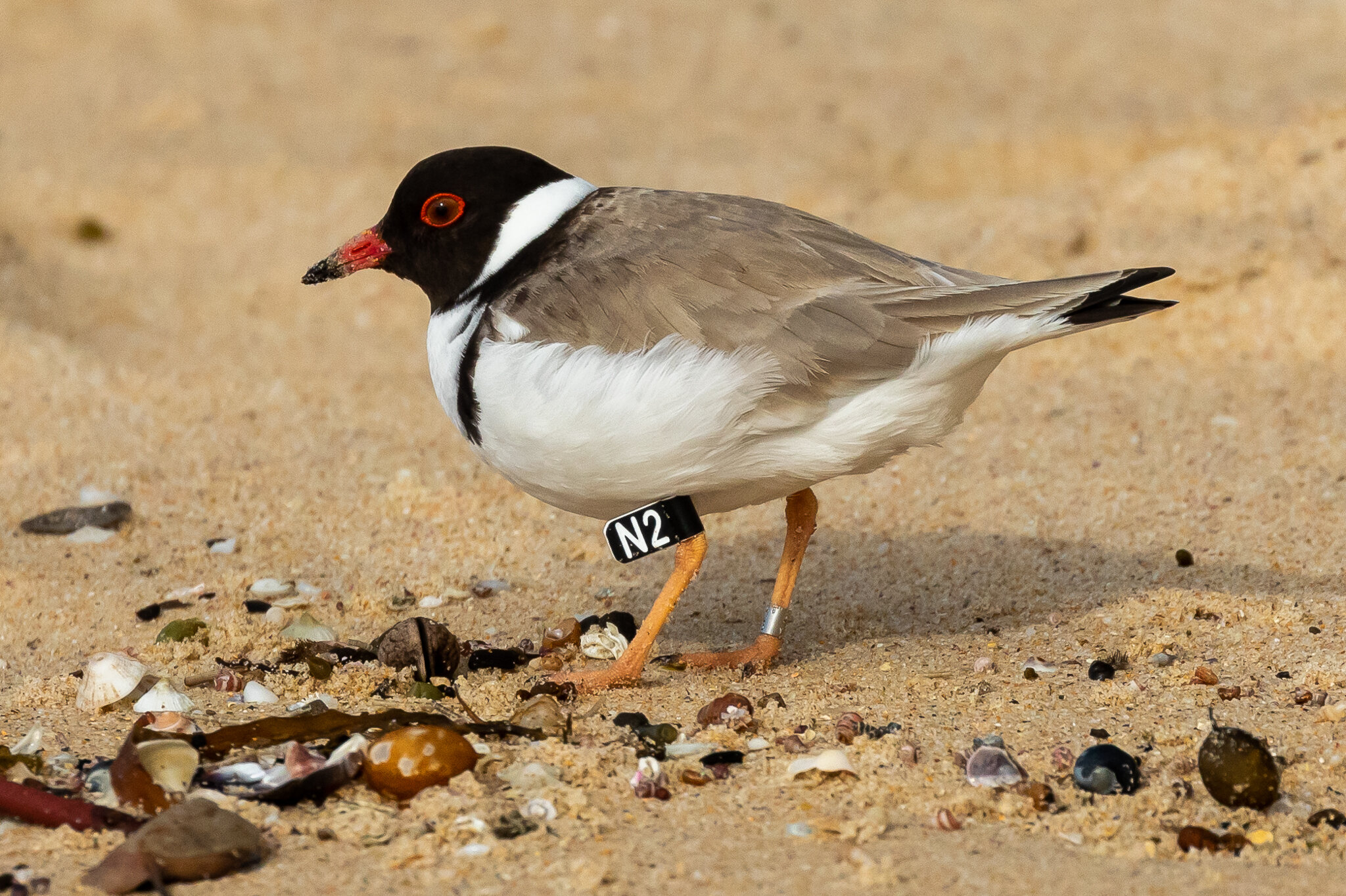The Milton-Ulladulla Birdwatchers, known locally as the MUD Birders, are an active group making fortnightly trips to local hotspots. Conjola Creek flows into Lake Conjola on the NSW South Coast. It forms winding waterways and lagoons with low lying farmland surrounded by Conjola National Park.
The Eucalypt forests of Conjola National Park surround Conjola Creek farmlands and littoral Casuarinas line the waterways. The picture shows Sulphur-crested Cockatoos and Australian Ravens roosting.
A Laughing Kookaburra. Both waterbirds and bushbirds are seen in this area with 36 species counted at last week’s visit. Highlights included a White-necked Heron, numerous Chestnut Teal, Wood Ducks and Pacific Black Ducks, Cattle Egrets, a White-bellied Sea-Eagle, and Red-browed Finches.
The locals got involved in proceedings as well.
A group of Chestnut Teals. This wonderful swamp and pond is fenced and protected by the land-owner. Unfortunately we did not see the Lewin’s Rail recently reported here.
Superb Fairy-wren. Much of this area was under water in recent floods and the land is still water-logged but looking good and green. Recent months have seen small birds return in numbers, especially large flocks of Red-browed finches which completely vanished after the 2019/2020 bushfires. Groups of Superb Fairy-wrens have also reappeared.
The creek broadens as it get closer to the lake. At the other end the lake sporadically opens to the sea at its mouth.















